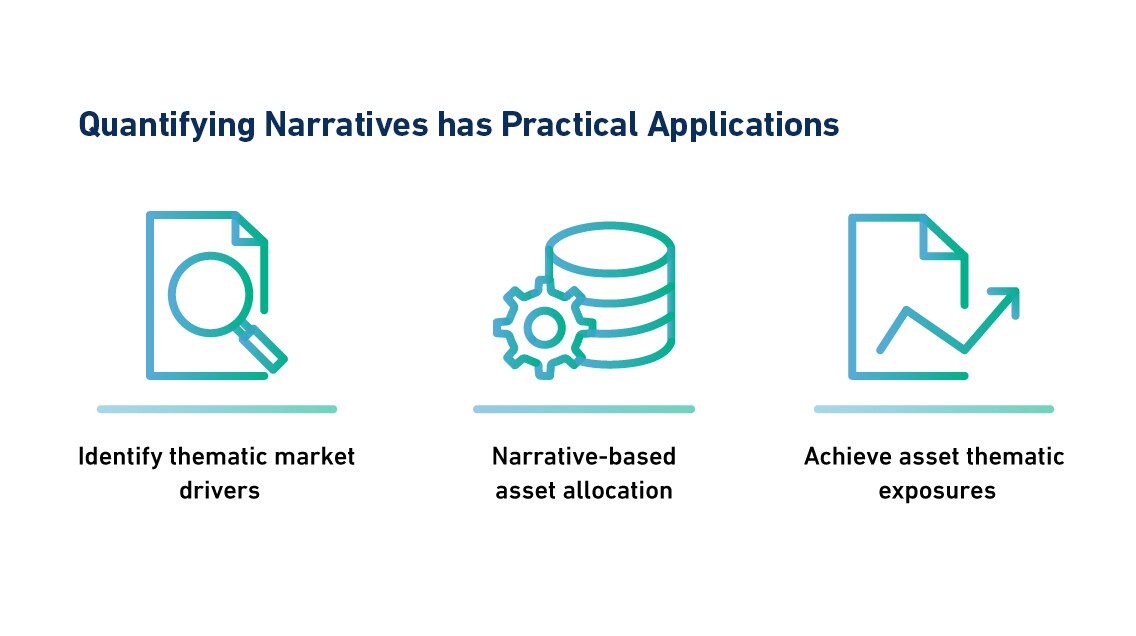Insights
Quantifying the impact of narratives on financial markets

The recent work of Nobel laureate, Robert Shiller, advocates that to improve our understanding of the economy and financial markets, we need to incorporate themes and stories that affect human behavior. This poses a challenge for practitioners who need to accurately capture the evolution of narratives in real-time.
December 2022
This paper introduces a media-coverage-based approach to quantify narratives and develops methodologies to explain the extent to which narratives drive financial markets and returns of investment portfolios. We show that media-derived narratives may contain predictive information for market returns beyond traditional macro indicators. Finally, we demonstrate that thematic indicators can be used to enhance asset allocation strategies and to gain or hedge exposure to narratives by constructing portfolios of narrative-sensitive assets.
Key highlights
The recent work of Nobel laureate, Robert Shiller, advocates that to improve our understanding of the economy and financial markets, economists must look beyond typical economic indicators to incorporate stories that affect individual and collective economic behavior. The challenge for investment professionals is how to capture permutations of narratives in real-time in order to understand how they are impacting market movements and asset prices.

The rapid rise of digital media has meant that stories, narratives, and themes, whether true or not, can quickly spread throughout the world. There are two potential implications of this: (1) it is increasingly important to understand narratives, as they can propagate more quickly than at any time in human history and (2) the digital aspect of media may provide an opportunity to capture their evolution in real-time. We explore these concepts by applying textual analysis (Natural Language Processing (NLP)) on large reservoirs of media articles to identify the intensity of media coverage and sentiment expressed toward various themes and narratives. By accurately quantifying narratives using digital media, we can develop empirical frameworks that use these measures to improve our understanding of financial markets and enhance our portfolios.
How useful is it to quantify the evolution of narratives? Our findings have three implications on market direction and portfolio returns. First, we confirm that measures of digital media narratives, dubbed thematic indicators, can accurately capture the evolution of narratives in real-time. For example, the Market Crash narrative, a measure of how often “markets” (e.g., SPY, NYSE and other variants) appear textually close to “crash” (e.g., bear or meltdown), has the highest explanatory power in explaining United States equity markets. Additionally, some narratives would emerge and rise to the top for a while and then fade away. This leads us to a second finding, media narratives can have information for future market returns beyond traditional macroeconomic factors. A narrative-based dynamic asset allocation strategy outperforms traditional benchmarks. Finally, we develop an empirical framework that enables investors to select narrative-sensitive assets to achieve the desired exposure. During the recent pandemic, the COVID-19 thematic indicator could have been used in constructing a long-short portfolio of sensitive assets to more effectively capture exposure to a COVID-19 economic recovery.



